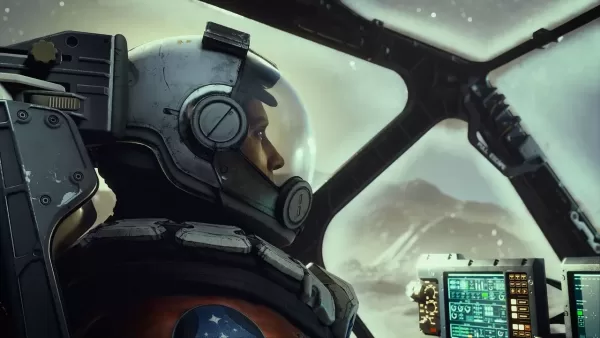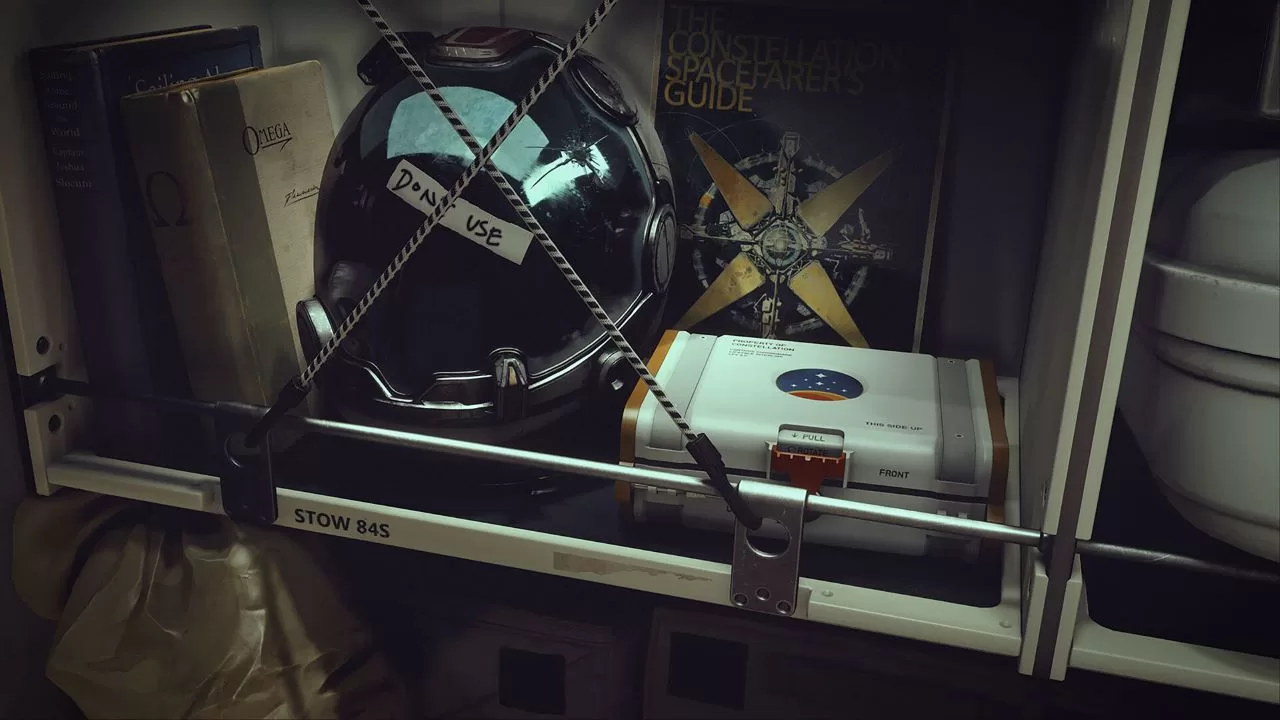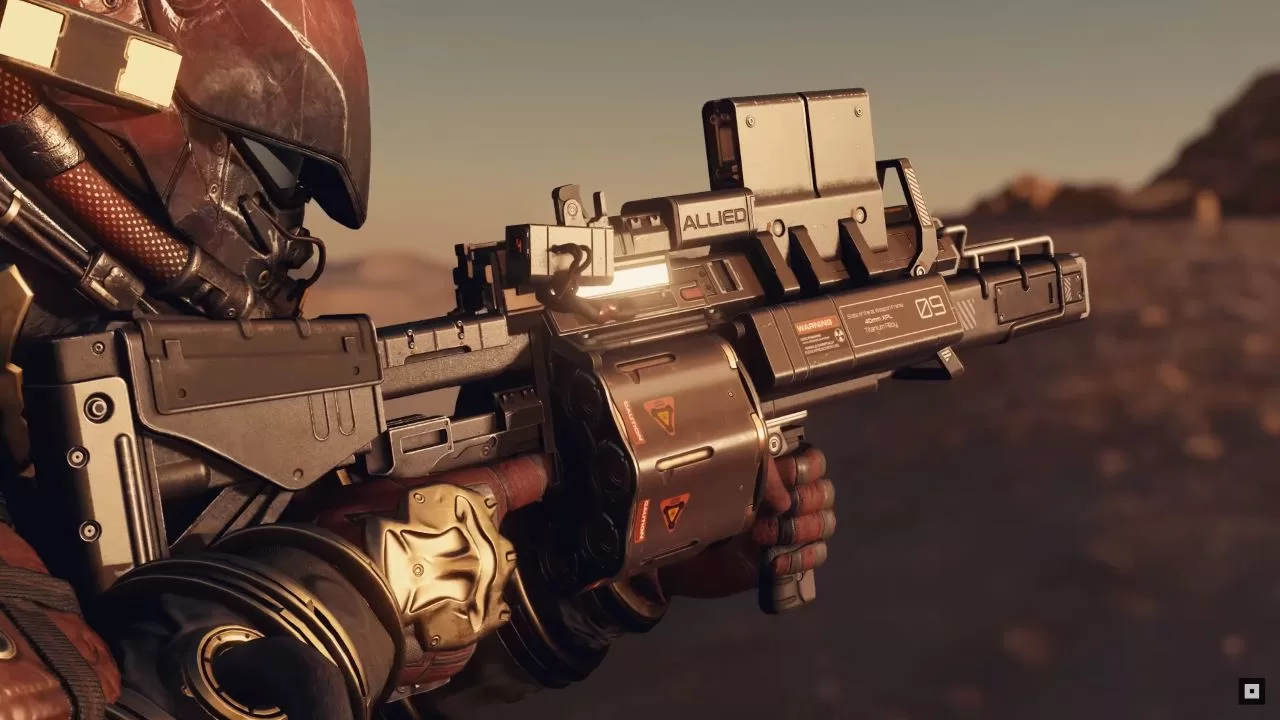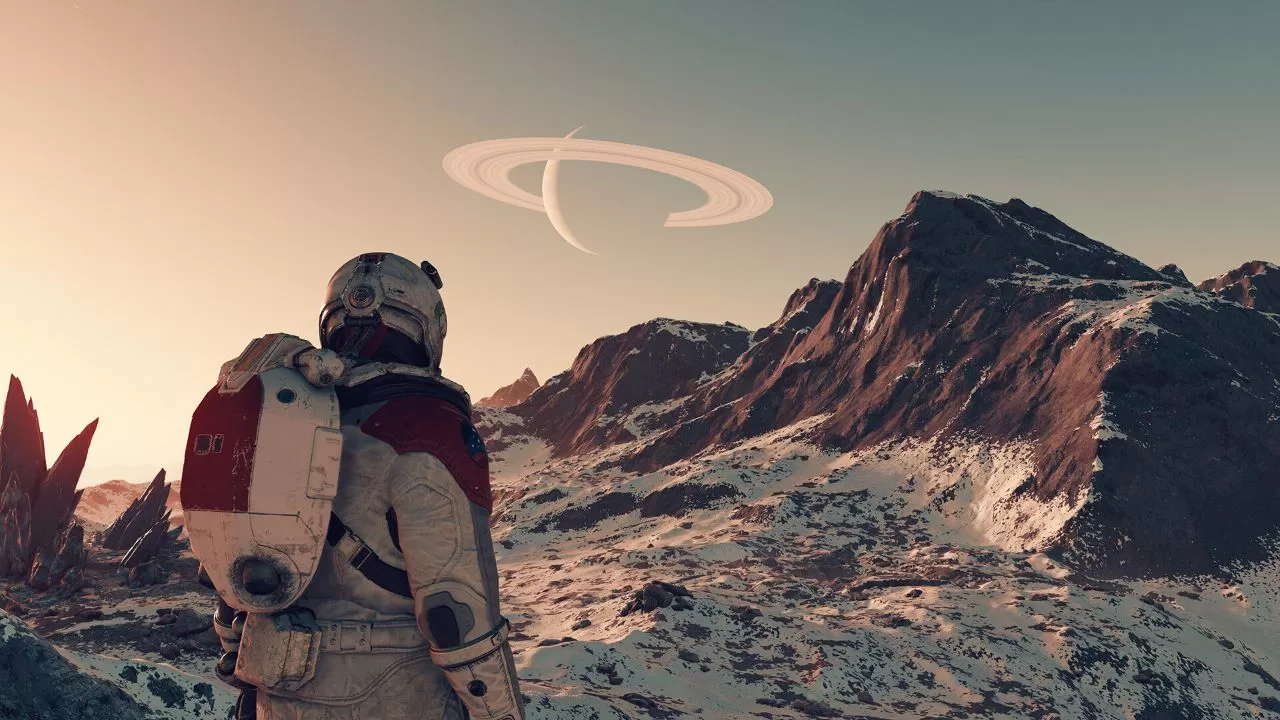Starfield Review | Reaches for the Sky
This isn't just Skyrim in space. Starfield does a lot to earn its place in the stars.

At long last, the latest Bethesda game is finally upon us in the form of Starfield. This isn’t just another entry in their staple Fallout and The Elder Scrolls franchise. This is an entirely new IP that’s centered around a sci-fi space adventure. No more dragons or post-apocalyptic elements that the studio has long been familiar and comfortable with.
It cannot be further emphasized just how important this game is for Xbox. After the disappointing post-release support of Halo Infinite and a critically panned Redfall, the Xbox brand was in desperate need of a win in terms of its exclusive offerings. Additionally, Bethesda was also in a bit of a pickle with their last major release being Fallout 76, a failed attempt at turning one of their most recognizable IPs into a soulless live-service game. Starfield will be their first project as a first-party Microsoft studio.
Fallout 4 was the first time I felt a little bit distant from the Bethesda formula. Mostly because it felt more like Fallout 3.5 rather than a full-blown sequel. Starfield doesn’t have the burden of continuing a well-known franchise. Instead, it has the seemingly impossible task of establishing a new one altogether. One that will skyrocket Bethesda back into the modern gaming conversations.



Setting proper horizons

In my opinion, Bethesda is one of the best game development studios in the business. They know how to create an engaging and expansive open-world RPG experience that you just can’t get anywhere else.
A Bethesda game is special because of its charm, the irresistible allure of the settings, and the sheer scale of it all coming together. This is why Skyrim is one of my favorite games of all time. There’s a reason why every time there’s a major Bethesda release, it’s always a significant event in gaming. It’s up there with the likes of Rockstar Games and From Software.
When Starfield was announced all the way back in 2018 up until today, Todd Howard has wasted no time in hyping up the game as if it was the definitive space game experience. With the promise of a thousand unique planets to explore, it was hard to not get excited about it.
As someone who loves Bethesda games and the sci-fi genre, Starfield seems like it was made for me. Now that I’ve sunk dozens of hours into it, I found myself contemplating as to what really drew me in this time. Is it the gameplay? The colorful cast of characters? The universe itself?
I’m just gonna say it right now. Starfield does not meet the galactic expectations that were set by Todd Howard and the community over the years. It had no chance to live up to any of them. We thought we were getting a galaxy. Instead, what we got is more of a solar system. While that may sound like a bad thing, I’m here to assure you that it isn’t. Starfield is not the end-all-be-all space adventure we were all hoping it to be. But it sure is one heck of a ride to be on.
Hey you. You’re finally awake

Starfield blasts off with a bit of a rocky start. Quite literally, in fact. In a daring and innovative move by Bethesda, you do not start as a prisoner in the game. You are a simple miner who’s on your first day on the job. As you investigate a strange mineral, you experience odd visions that knock you out, which becomes the transition to the character creation.
The customization options are diverse enough for you to create either the most attractive or the most revolting space man/woman. However, you can only choose to be human. If you wanted to play as a weird alien species, this is not it. You’ll also be given the chance to choose what background your character has. This will determine your starting skills and passive effects. I won’t be spoiling any of them. A lot of the fun is discovering how these will affect your gameplay from subtle to more in-your-face ways.
One thing leads to another until you discover Constellation, a group of different personalities who are united by one interest: to explore what’s out there in the universe. Everything happens almost too fast actually. One minute, you’re being oriented to mine rocks, and the next, you’re now the captain of your own ship and you’re being recruited by a group of space explorers just because you touched a rock. And that’s all I’ll say about the main narrative of Starfield. Much like the central idea of being an explorer of the unknown, this game is best experienced with as little knowledge as possible. The story is filled with great beats that will only get even better the more you stick with it.
As great as the entire package is, the opening hours of Starfield don’t have the same magic as previous Bethesda games. The now iconic Skyrim opening, as meme’d as it is, opens with an intriguing dragon attack that your character barely escapes, in which the game presents to you an entire country for you to explore freely. You then discover that you are Dragonborn and set out on a quest to save the world from giant flying lizards because you can shout them to death. Now that’s what you call an awesome setup.
Starfield doesn’t have the same advantage as that. You become a space explorer because you touched a rock and something peculiar happens. Instead of interesting plot points, the opening stretch is filled with the burden of introducing the player to a lot of the gameplay systems. At first, these can get overwhelming and I’d go as far as to say that they might potentially drive away players. However, I do urge that you stick by it because it’s important to come into Starfield thinking that it’s a marathon and not a sprint.
Into the unknown

To absolutely no one’s surprise, Bethesda’s talent at world-building is in full display here at Starfield. The universe they have created is genuinely fantastic. The lore that tells its story long before you even step foot in it is intriguing and presented elegantly through a museum that you can access fairly early on in the game. And for the real space nerds out there, there are a bajillion sci-fi references from almost anything you can think of. Starfield feels like a celebration of everything that came before it and the influences it took to create the space sandbox.
It’s easy to be invested in all of it simply because of Constellation. The group is inherently extremely curious about what’s out there, exploring the unknown, and finding answers to questions that never seem to stop. It is through the narrative lens of their excitement to just figure it all out that made me want to do it with them.
That’s because Bethesda did one simple thing that barely anyone will talk about but it deserves to be highlighted: they didn’t make the group a bunch of doubtful personalities towards you. It’s easy to just make everyone be apprehensive of your presence, showing up out of nowhere. Most RPGs would have you work your way up to get everyone’s approval as it starts you with having to deal with their antagonistic POV. Starfield doesn’t do that. There is a narrative explanation as to why they trust you and it’s not all warm hugs at the start but they are a genuine cast of characters that you just feel welcomed in. When a robot who is devoid of any human emotion quickly becomes one of my favorite characters, you know they’re doing it right.
By extension, Starfield’s characters are as vast as the universe itself. You’ll like some, you’ll love some, and you might even hate others. The core cast is properly fleshed out and well-written which entices you to get to know them further. It also helps that the facial animations are expressive enough to complement the fantastic voice acting across the board. At times, it does still have the occasional Bethesda jank of deadpan expressions or awkward lip syncing but it’s nowhere near as distracting as other reviewers claim it to be.
Starfield has multiple wormholes to fall into in terms of the main and side content it offers. Some of them represent the best storylines Bethesda has ever made. Since the embargo lifted, there’s been a lot fo talk regarding mainlining the questline in order to get to New Game+ as fast as possible. While yes, Bethesda did do a fairly unique and significant approach to replayability, I wouldn’t go as far as to say that you should be gunning for the main content as fast as possible.
Play Starfield as you see fit because its systems allow you to roleplay as much as you want. Do you prefer to be a kind and selfless explorer? A charming and extroverted one? Or a Han Solo-type space cowboy? The side quests allow you to be a bit more open with who or what your character is.
The different factions and their respective storylines are a great way to see just how diverse Starfield is. Each one can act as its own mini-genre. You can be part of a corporate espionage narrative with one while being a galactic space cop in the other. It is here where the Bethesda narrative team stretches its legs a bit further and taps into the different types of tropes we associate with notable sci-fi projects. It’s genuinely great and I encourage you to experience it yourselves.
To a bit of infinity and somewhat beyond

As much as Starfield goes for the stars in terms of its scope, it’s not exactly the seamless experience we were all hoping it to be. Keeping up with Bethesda tradition, Starfield is in love with loading screens. Whether it be entering rooms, going into new areas, or traveling to other systems. Going from one planet to another requires navigating and sitting through 3-4 menus and loading screens.
While the handcrafted areas and planets are all amazing in their own right, boasting some of the best environmental visuals I’ve seen since Cyberpunk 2077, it’s with the other thousand randomly generated planet surfaces that feel barren and repetitive. Additionally, they’re not exactly planets but more medium-sized areas. There are only specific areas where you can land in and the game generates a walkable space around that. The problem is not the artificiality of it all, it’s that it doesn’t have interesting factors to keep you engaged. It’s always the same enemies, resources, and gameplay loop.
This is a stark contrast to the previously mentioned handcrafted areas. The places and planets that were made specifically for story content. Bethesda really improved its environmental storytelling with the use of item placement and geographic details. Entering a room of a character tells you everything you need to know in terms of their personality, how they operate, and what their daily routine looks like. Cities are brimming with fascinating architecture that informs what society is like in this part of the galaxy. It’s in both the bigger picture and the small intricate minute details that Starfield shines in its presentation. Even the character and item models convey stories of their own. This is a great-looking game. Don’t let anyone else tell you otherwise.

What Starfield fails to do which Skyrim excelled at is give a reason to continue exploring off the beaten path. In every direction you go in Skyrim, there’s always an incentive such as new map locations, mobs to fight, and hidden questlines. While Starfield does have those, it doesn’t feel nearly as smooth as the way previous Bethesda titles executed it.
Starfield can at times feel disjointed. This is a game that requires your time and patience. Its abundance of systems are drip-fed to make it seem like the game is constantly expanding but it also makes it a bit of a slow chug. Stick with it and it’ll reward you with the Bethesda magic we all know and love.
Star Wars

Let’s talk combat. This is the one aspect that I was always never fond of in previous Bethesda titles. Simply because weapons felt floaty in their handling and a lack of satisfying visual feedback, when attacks landed on an enemy for both, ranged and melee options. I’m confident in saying that Starfield has the best combat system that the studio has ever made.
The weapons look and sound fantastic. Controlling them no longer feels like you’re carrying a plastic gun that just so happens to make enemy heads explode. There is real impact and player feedback when it comes to the combat system in Starfield.
For the first time in a Bethesda game, I enjoyed nearly all of the combat encounters. Surprisingly, third-person combat is also great. It’s not as revolutionary as titles like Gears of War or The Last of Us, but it does its job well enough. Extra factors such as jetpacks and boosts really add a much-needed sense of speed and verticality to the typical Bethesda combat system.
However, the one sour point lies in the AI. Enemies are not smart in this game. They’re either standing in the open, just begging for you to shoot their face, or they’re just going to wait around for you to get close. Even when pumping up the difficulty, they’re about as clueless as a first-time player.
It’s in the ship combat where Starfield really takes it to the next level. The ship feels fantastic to control with responsive and intuitive controls. You have to divert power to specific systems in order to make sure they are used at their maximum potential and it feels satisfying to pull it all off in the heat of the moment. I felt like an actual pilot when navigating the whole thing.

When it comes to being on foot, progression doesn’t really matter. You acquire certain skills to improve your performance in specific gameplay mechanics such as increased pistol damage, better lockpicking, etc. The usual sort. There are areas that have level suggestions and enemies who are a bit more leveled than you will feel a tad bullet spongy. But there will come a point where it becomes irrelevant and you can freely just run around. As I said with regards to the AI, it’s not like Starfield offers a good enough challenge for you to really pay attention to your build.
It’s the ship combat that becomes a little bit more stat-based. If you don’t engage well enough with the ship upgrading and customization systems, you will get vaporized. There will be times when you will face random encounters in space. Enemies will attack you even if you just want to travel somewhere else. It’s best to be on top of your ship parts to make sure that you’re not just one of those floating wrecks in the system.
I do have to warn you that the UI in Starfield is terrible. Simple as that. It’s confusing, provides minimal information, and is unintuitive to navigate through. The same can be said for the inventory system. Your ship has a certain inventory weight via the cargo hold which is determined by the cargo modules. Even when fully upgraded, I still found myself scrambling as to where to put all of the gear and resources I’d acquired. It came to a point where I was just throwing away random stuff just so I could accommodate new ones. Or have companions carry the most random item. This is an ancient problem that has persisted with every Bethesda title and it’s nowhere near improved in Starfield.
Bugthesda

But of course, this is a Bethesda game. That means we should expect a broken launch that’s riddled with bugs and undercooked gameplay mechanics. Not exactly. Starfield is the most polished Bethesda game launch I’ve ever witnessed.
That’s not to say it is perfect. There are still the usual open-world bugs here but nowhere near the launch states of Skyrim, Fallout 4, and Fallout 76. The one-year delay was worth it because I don’t know what this would’ve looked like if they released it back in 2022 as originally intended.
NPCs still clip through walls and floors, characters talk over each other, and there were even moments where I was having a conversation with someone while they were facing the opposite direction. The usual Besthesda jank is still here.
I played Starfield on an ROG Flow X16 gaming laptop with an ROG XG Mobile eGPU plugged in with all the settings turned to low. Unfortunately, DLSS isn’t supported at the moment and Bethesda has oddly kept quiet about that but it does have FSR 2 which is practically a required setting to run this thing at a fairly stable framerate. I was able to get 60-90 fps in indoor settings. Once I step out whether it just be exploring or in high-action scenarios, the performance dips to around 35-50 fps. It’s still playable in this state but here’s hoping that Nvidia DLSS support is patched in just to help out those who don’t necessarily have the most upgraded hardware.
Starfield Final Verdict – 8.5/10

The thing about Starfield is that this is not the type of game that is best experienced at a one-shot pace. I had to do it as a necessity for this review but I also tried to take my time as much as I could, whenever I could. The gravitational pull of this brand-new world is brimming with potential and hidden details that I am almost 100% sure that I’ve not experienced yet.
Given the impressive scope of it all, this is a game that deserves to be experienced and continually discovered for years down the line. And that’s not even saying the possibilities being introduced by mods, which have kept titles like Skyrim and Fallout 4 thriving for years.
There are entire systems like building outposts that are entirely optional yet very in-depth in their approach. It’s this type of freedom where Starfield truly shines. You don’t go into this thinking you’re going to have one smooth trip traveling from one planet to another. It is an experience that is chopped in bursts and is meant to be appreciated as such. The Bethesda world-building is still here and it feels genuine. You just have to sit through a couple of artificial barriers to get to them.
If there was one major negative I have for the whole experience, I wish there were more consequences for the choices I made. Mass Effect is a masterclass of nailing that sense of weight with every decision and I wish Bethesda would lean more into that.
Regardless, if you’re a sci-fi fan, play this. If you’re a Bethesda fan, play this. Starfield is yet another triumphant RPG that I can only see get better as the years go by. This is a title that I know I’ll look back fondly on, the same way I remember my very first Skyrim playthrough. As I crave to head back out to the stars, my imagination runs wild with how Bethesda is going to further expand this universe and the next ones.
This review was made via a PC game code provided by the publisher.

